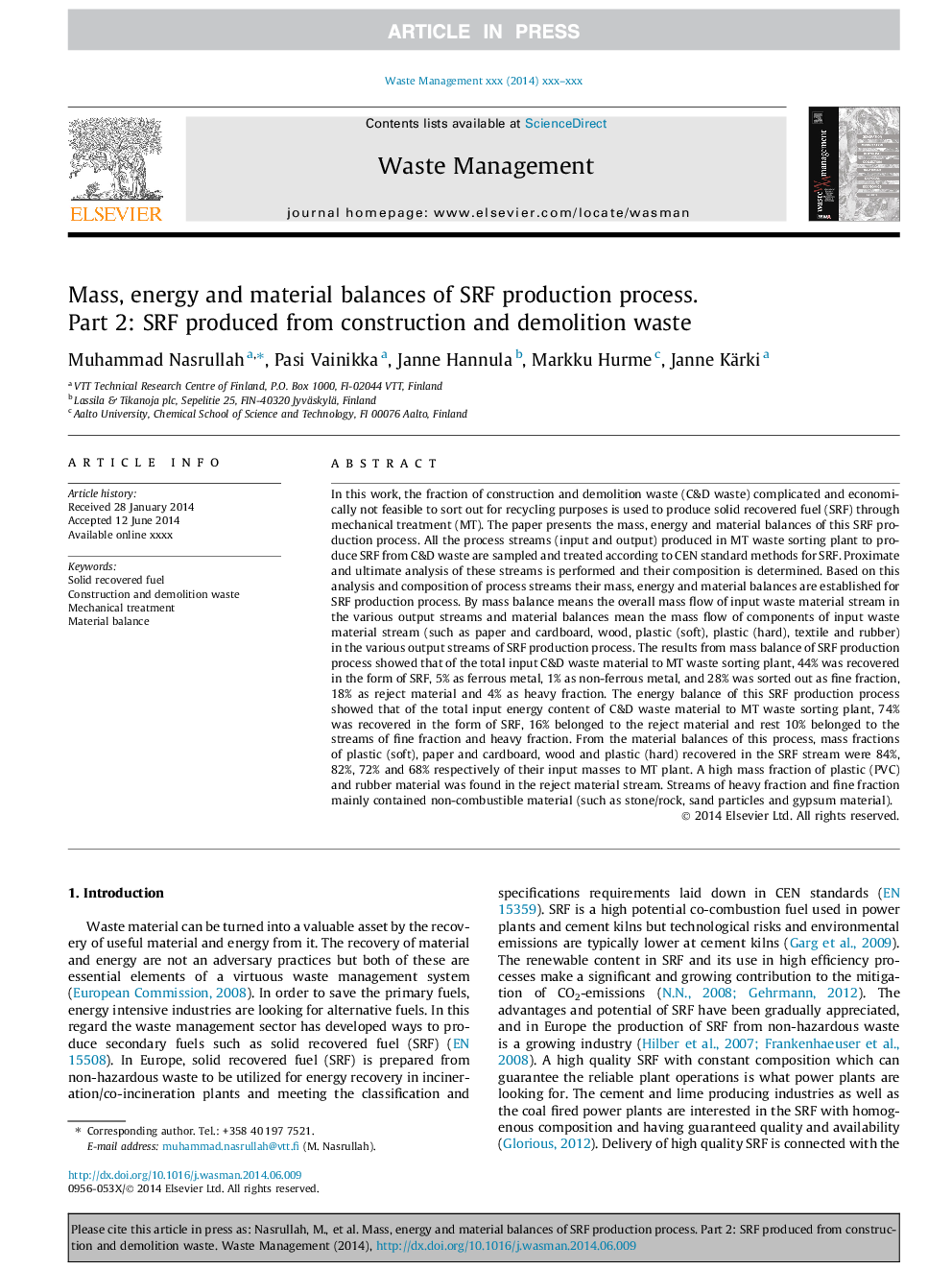| کد مقاله | کد نشریه | سال انتشار | مقاله انگلیسی | نسخه تمام متن |
|---|---|---|---|---|
| 6354807 | 1315024 | 2014 | 8 صفحه PDF | دانلود رایگان |
عنوان انگلیسی مقاله ISI
Mass, energy and material balances of SRF production process. Part 2: SRF produced from construction and demolition waste
دانلود مقاله + سفارش ترجمه
دانلود مقاله ISI انگلیسی
رایگان برای ایرانیان
کلمات کلیدی
موضوعات مرتبط
مهندسی و علوم پایه
علوم زمین و سیارات
مهندسی ژئوتکنیک و زمین شناسی مهندسی
پیش نمایش صفحه اول مقاله

چکیده انگلیسی
In this work, the fraction of construction and demolition waste (C&D waste) complicated and economically not feasible to sort out for recycling purposes is used to produce solid recovered fuel (SRF) through mechanical treatment (MT). The paper presents the mass, energy and material balances of this SRF production process. All the process streams (input and output) produced in MT waste sorting plant to produce SRF from C&D waste are sampled and treated according to CEN standard methods for SRF. Proximate and ultimate analysis of these streams is performed and their composition is determined. Based on this analysis and composition of process streams their mass, energy and material balances are established for SRF production process. By mass balance means the overall mass flow of input waste material stream in the various output streams and material balances mean the mass flow of components of input waste material stream (such as paper and cardboard, wood, plastic (soft), plastic (hard), textile and rubber) in the various output streams of SRF production process. The results from mass balance of SRF production process showed that of the total input C&D waste material to MT waste sorting plant, 44% was recovered in the form of SRF, 5% as ferrous metal, 1% as non-ferrous metal, and 28% was sorted out as fine fraction, 18% as reject material and 4% as heavy fraction. The energy balance of this SRF production process showed that of the total input energy content of C&D waste material to MT waste sorting plant, 74% was recovered in the form of SRF, 16% belonged to the reject material and rest 10% belonged to the streams of fine fraction and heavy fraction. From the material balances of this process, mass fractions of plastic (soft), paper and cardboard, wood and plastic (hard) recovered in the SRF stream were 84%, 82%, 72% and 68% respectively of their input masses to MT plant. A high mass fraction of plastic (PVC) and rubber material was found in the reject material stream. Streams of heavy fraction and fine fraction mainly contained non-combustible material (such as stone/rock, sand particles and gypsum material).
ناشر
Database: Elsevier - ScienceDirect (ساینس دایرکت)
Journal: Waste Management - Volume 34, Issue 11, November 2014, Pages 2163-2170
Journal: Waste Management - Volume 34, Issue 11, November 2014, Pages 2163-2170
نویسندگان
Muhammad Nasrullah, Pasi Vainikka, Janne Hannula, Markku Hurme, Janne Kärki,